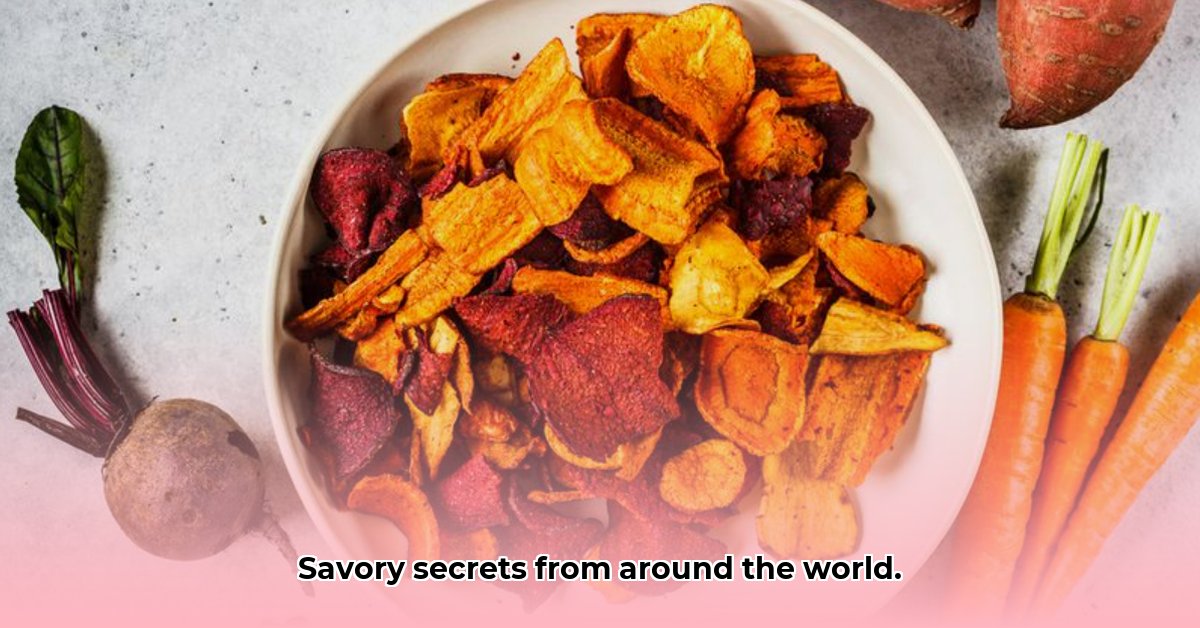Ever notice how many delicious foods start with the letter “S”? It’s amazing! From everyday staples to exotic treats, “S” foods are found all over the world, showing just how creative and connected we are as humans when it comes to food. This article is your guide to exploring some of the most popular and interesting “S” foods, looking at where they come from, how people cook them, and what’s happening in the food market. We’ll see why some “S” foods are super popular, while others are more of a hidden gem. We even have some tips to help you make the most of the “S” food scene, whether you’re a foodie, a cook, or someone just curious about food. Get ready to discover a world of tasty surprises! For a broader look at foods starting with other letters, check out this comprehensive guide.
Savory and Sweet: A Culinary Exploration of Foods Starting With S
Let’s embark on a global culinary journey, exploring the diverse and delicious world of foods that begin with the letter “S.” From staple ingredients to exotic dishes, we’ll uncover fascinating stories, culinary traditions, and market trends associated with these “S” foods.
Staples in the Spotlight: Everyday “S” Foods and Their Global Reach
Consider the foods that frequently appear on our tables. Salads offer endless variations, reflecting regional ingredients and culinary innovation. Sandwiches, a testament to convenience and adaptability, have evolved into countless forms, from classic deli creations to gourmet masterpieces. Sausages, with their diverse range of flavors and preparations, represent a culinary tradition found across numerous cultures. And sushi, once a regional delicacy, has become a global phenomenon, celebrated for its artistry and health benefits.
-
Salad: A mixture of vegetables, fruits, and proteins, dressed and served cold or at room temperature. The possibilities of combinations are endless.
-
Sandwich: Two slices of bread with a filling in between. A lunchbox staple, constantly reinvented with gourmet ingredients.
-
Sausage: Seasoned ground meat, often encased in a casing, grilled, pan-fried, or baked. From Italian sausages to spicy chorizo, the variety is immense.
-
Sushi: Japanese dish of vinegared rice combined with seafood, vegetables, and sometimes tropical fruits. A global favorite that showcases artistry and fresh ingredients.
These “S” staples demonstrate how fundamental foods can adapt and thrive across different cultures, evolving to meet local tastes and preferences. Their enduring popularity highlights the importance of convenience, versatility, and cultural exchange in shaping our culinary landscape.
Niche Treasures: Unearthing Unique “S” Foods and Their Cultural Significance
Beyond the everyday staples, a world of unique and intriguing “S” foods awaits discovery. Saffron, the world’s most expensive spice, adds a touch of luxury and vibrant color to dishes like paella and risotto. Salami, with its diverse regional variations, reflects the culinary traditions and terroirs of different European countries. Sambar, a South Indian lentil stew, showcases the rich flavors and complex spice blends of Indian cuisine.
-
Saffron: A spice derived from the Crocus sativus flower, known for its distinct flavor, vibrant color, and high cost. A staple in dishes like paella and risotto.
-
Salami: Cured sausage made from fermented and air-dried meat, with regional variations reflecting local culinary traditions. Think of Italian salami or Hungarian salami.
-
Sambar: A lentil-based vegetable stew or chowder, cooked with pigeon pea and tamarind broth. Popular in South Indian and Sri Lankan cuisines.
These niche “S” foods offer a glimpse into the diverse culinary heritage of different cultures. Their unique flavors and production methods reflect time-honored traditions and a deep connection to local ingredients. Exploring these foods expands our palates and provides a window into different ways of life.
Sweet “S” Sensations: Indulging in Sugary Delights
For those with a sweet tooth, the letter “S” offers a delectable array of treats. Sachertorte, a classic Austrian chocolate cake, is the perfect dessert. Shortbread cookies, with their buttery and crumbly texture, provide comfort in every bite. Snickerdoodles have a cinnamon-sugar coating and a characteristic tang. And strawberry shortcake, with its layers of biscuits, fresh strawberries, and whipped cream, is a sign that summer is here.
-
Sachertorte: A rich chocolate cake from Austria, typically served with apricot jam and whipped cream. A classic symbol of Viennese pastry.
-
Shortbread: A type of cookie with Scottish origins, made with butter, flour, and sugar. Known for its crumbly texture and rich flavor.
-
Snickerdoodle: A type of sugar cookie rolled in cinnamon sugar before baking, resulting in a slightly tangy and chewy texture.
-
Strawberry Shortcake: A dessert made with biscuits, fresh strawberries, and whipped cream. A summertime favorite.
These sweet “S” treats provide a comforting and indulgent escape. Their familiar flavors and textures evoke feelings of nostalgia and pleasure. They are a testament to our universal love of sweetness and the power of food to bring us joy.
Savory “S” Sensations: Exploring Unexpected Flavors
The savory side of “S” foods offers a diverse range of exciting flavors and culinary experiences. Sablefish, a sustainable seafood choice, gains popularity for its rich, buttery flavor and versatility in dishes. Saimin, a Hawaiian noodle soup, combines cultural influences into each bowl. Saltimbocca, an Italian veal dish, features the savory combination of prosciutto and sage.
-
Sablefish: A type of fish with a rich, buttery flavor, often served grilled, baked, or smoked. Its mild flavor makes it a canvas for creative chefs.
-
Saimin: A noodle soup dish popular in Hawaiian cuisine, typically garnished with green onions, kamaboko, and other toppings. A comforting bowl of noodles with a cultural twist.
-
Saltimbocca: An Italian dish made with veal, prosciutto, and sage, typically pan-fried in butter and white wine. A savory and aromatic delight.
These savory “S” foods showcase the breadth of culinary possibilities. From the delicate flavors of seafood to the complex combinations of international dishes, they offer a sensory adventure for adventurous palates.
Current Market Trends Shaping the Food Industry
The food industry is constantly evolving, driven by changing consumer preferences, technological advancements, and growing awareness of sustainability and health. Several key trends are shaping the market for “S” foods and beyond.
| Trend | Characteristics | Implications for “S” Foods |
|---|---|---|
| Sustainability | Focus on environmentally friendly and ethically responsible production practices. | Increasing demand for sustainably sourced seafood (sablefish), organic spinach, and fair-trade ingredients. |
| Health & Wellness | Growing consumer interest in nutritious and functional foods. | Emphasis on the health benefits of salmon (omega-3s), spinach (vitamins), and salads (fresh vegetables). |
| Plant-Based Diets | Rising popularity of vegetarian and vegan lifestyles. | Increased demand for plant-based alternatives to meat (sausage substitutes) and dairy (soy milk). |
| Innovation | Development of new products, flavors, and preparation techniques. | Opportunities for creating innovative “S” food-based dishes and products. |
These market trends highlight the importance of adaptability and innovation for food businesses. By embracing sustainability, focusing on health and wellness, catering to plant-based diets, and embracing innovation, companies can thrive in the ever-changing food landscape.
Mastering Sustainable Sourcing: A Step-by-Step Guide
Sustainable sourcing is crucial for the long-term health of our planet and the success of food businesses. By following these steps, you can make informed decisions about the foods you consume and support responsible production practices:
- Identify Your Priorities: Determine which sustainability issues are most important to you (e.g., environmental impact, social justice, animal welfare).
- Research and Educate Yourself: Learn about the production methods and environmental impact of different “S” foods.
- Look for Certifications: Seek out products with credible certifications that verify sustainable practices (e.g., MSC for seafood, USDA Organic for produce).
- Support Local Producers: Buying from local farmers and producers reduces transportation costs and supports your community.
- Ask Questions: Don’t hesitate to ask your grocer or restaurant about their sourcing practices.
- Make Informed Choices: Choose “S” foods that align with your values and contribute to a more sustainable food system.
By taking these steps, we can all contribute to a more sustainable food system.
This exploration of “S” foods is just the beginning. There’s a vast world of flavors, histories, and cultural significance waiting to be discovered. So, the next time you’re planning a meal, remember the incredible diversity hidden within this single letter. Happy cooking and eating!
Sourcing Sustainable Sablefish for Restaurant Menus: A Comprehensive Guide
Key Takeaways:
- Consumer demand for sustainable seafood is high and growing.
- Sourcing sustainable sablefish requires careful consideration of supply chains and certifications.
- Partnerships with responsible suppliers are crucial for long-term success.
- Transparency and traceability are essential to building consumer trust.
- Educating staff and customers about sustainable seafood choices is vital.
Navigating the Sustainable Seafood Maze: Sablefish as a Case Study Analysis
The restaurant industry faces
- Shop Bento Box for Sale To Find Your Ideal Lunch Container - December 6, 2025
- Lunch Box That Fits Bento Box Neatly for Daily Use - December 5, 2025
- Japanese Lunch Bag Does Double Duty as Bento Carrier and Tote - December 4, 2025










